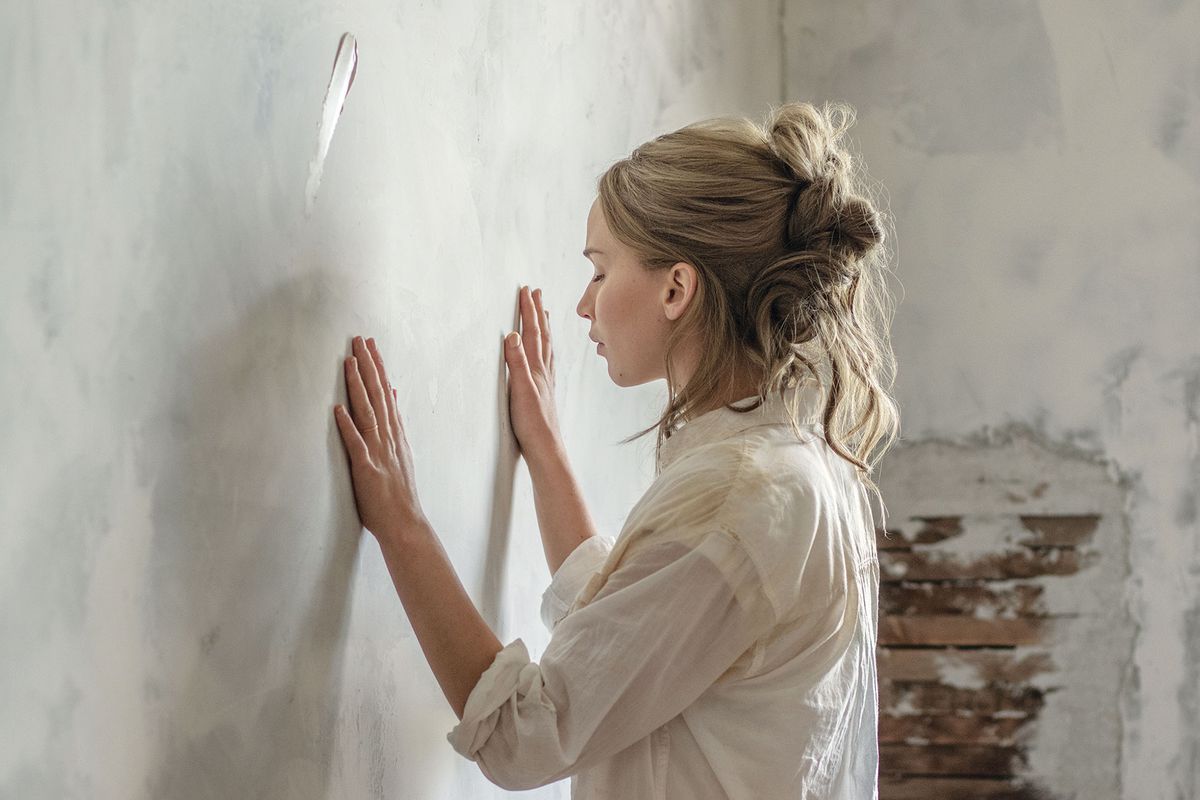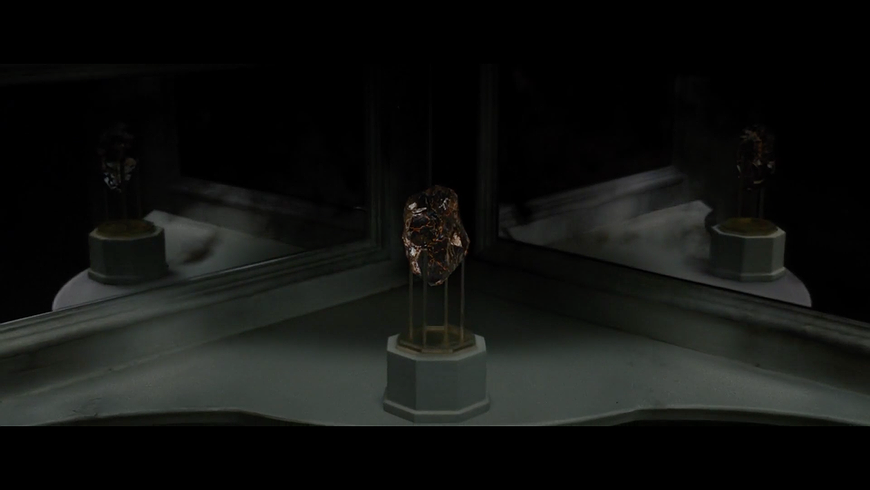"Mother!" As a Archetype of Femininity and Masculinity
Gülin Ören
"Mother!" (2017) is a drama/mystery film which was written and directed by Darren Aronofsky. The film focuses on the relationship between woman and man and the locations of the film. The film's main characters, man and woman, are mythical archetypes, and it is also emphasized that we do not hear the names of the characters and code them as man and woman. The rest of the film explains these backgrounds through the characters we see, the growth of characters, and their relationship to the field. In this work I will explain the film and mythical archetypal connections and the relations between field and characters based on the masculine and feminine concepts and perspectives of Deleuze and Guattari through Chrysanthi Nigianni's article "Becoming-Woman by Breaking the Waves". I will also consider the end of the movie which built a loop to create an endless archetypal story recreating the masculine and an attempt to analyze the feminine part of the masculine through Antonia Felix's article "Lost in Individuation: Elements of Archetypes and Individuation in Sofia Coppola's film "Lost in Translation".
Key words: feminine, masculine, "Mother!", archetype, mother, Adam, Eve, myth.
“Mother!” (2017) is a drama/mystery film which was written and directed by Darren Aronofsky. The film focuses on a relationship between a woman, a man and a home. We can say that the film presents us a narrative which has a path from specific to general and follows an induction path. If we talk about the plot, in the first instance, film begins with two characters called ‘mother’ and ‘him’. The film takes place in the house where the man lived and was burned in his youth. In the first scene of the film, we see a burning woman and a home which dissolves in the image of a burning piece of glass. When the male character puts this piece of glass in a showcase, home and woman are repaired simultaneously. After that, the woman is waking up in the bedroom and we see the woman trying to repair the house throughout the entire movie. Also, the male character is an author and focuses on his own book and creativity. After that, the film develops through the characters that come home and literally invade the place. We can also see that the film refers to many mythological stories and the stories easily can be linked with feminism and woman.

So, I will criticize the film through the mythic approach and the feminist theory. If we begin with the feminist theory, we can use Chrysanthi Nigianni’s article “Becoming-Woman By Breaking the Waves”. The article examines subjects like “becoming-woman”, female perception of humanity,
cycles of becomings and power hierarchy through to Deleuze and Guttari’s perspective.
“…we are given two options regarding a feminist reading of this film: either that we are presented with an(other) narrative, whose political force resides on speaking out, revealing, representing woman’s social situation as victim within patriarchal society; or with a narrative that rules out our conventional definition of freedom as primarily being about self-determination and free will.”
(Nigianni, 2009, p.110)

If we look back at the film through this quotation, we can see the mother character as a victim. Because while the man has assumed the creative role, we see the woman constantly trying
to repair the house. If we think about this situation, we can understand the mythological infrastructure of the film. If we look through the characters, the mother can be thought as Gaia (earth) from the ancient Greek mythology, and the man is actually a creator, author and god archetype. The woman becomes whole with the house, feels with the house and feels the house. Therefore, the woman is actually the house herself. Also, the male character is as an archetype of God, it becomes meaningful over the two subsequent characters. In the film, we suddenly see a man knocking on the door. Afterwards we understood that this guy is actually an admirer of the male character’s creations (books) and that's why he comes there. We can actually see this admiration as praise for God archetype of the male character and his creative mission. Just like a human admiring god, this guy admires the male character and what he creates. Then the male character will let the man stay there. The man's wife comes home suddenly just like Eve’s sending to the earth after Adam. This is actually a kind of invasion of the house, female character, and Gaia. When we see the woman coming and woman and the man having sex, we understand that these two characters are symbols of the characters of Eve and Adam. Just like Adam and Eve in the myth they have sex after they reach homeland, earth. In the movie for these two, like Adam and Eve, the homeland is ‘the house’. If we think about this situation, we can say that this symbolism emphasizes the man's creative mission and being the owner of the home positions him as God.
“The becoming-woman-divine as produced here signals thus the unfolding of a virtual femininity that leads to the a-subjective, the creation of an-other space, the appearance of a new economy as emerging after the ‘death of (a masculine) God’; a death that does not lead to nihilism, cynicism or even atheism but to a new faith that another world exists under the impoverished world of an objective, discontinuous, materiality: that is, the sacred world of a lost intimacy and interconnectivity between the subject and the world, the self and the other, the subject and the object.”
(Nigianni, 2009, p.110)

Nigianni explains perceptions of Deleuze and Guattari that there is no separation or opposition. According to this perception, something is defined as non. If we need to explain, we can think that something isn’t opposite of other, but non cover of other. Thus, a paradigm emerges as if something is not other, can’t carry the features of the other, but it doesn’t mean something is the negative of other. Then he defines feminine and masculine through this paradigm. If we take into account the above citation, we can explain these definitions through the film. First of all, if we think through the Deleuze Guattarian approach, God is the masculine one. Thus, all creatures and field features of God became the masculine one. The feminine one is defined as non masculine one, so feminine one is non creator one and has no space. At the end of this idea, “Becoming- Woman Divine” equals with self sacrifice because woman never understand her own becoming because of the masculine meaning of becoming. In this story becoming equals with creation and creation is linked with masculine. According to the citation, “Becoming-Woman- Divine” refers to another space because space belongs to masculine. Consequently this paradigm reveals that masculine is equal to God and God lined with all being and space, also “becoming- woman divine” is equal with feminine and feminine linked with self sacrifice and another space. If we look back at the film through to this paradigm, we can say that self-sacrifice and “Becoming- woman-divine” symbolizes the mother and its linked with another space and another space represent the home and the woman herself in this film. On the other hand, the male character represents the masculine one, the God and the space, so the space means the whole diegetic world. We can call the woman as the self-sacrificing one of this story because her home and herself are invaded and abused. Despite this situation, she continues to repair the house, in this case, because she is not aware of her existence and that existence and becoming are linked with the masculine one. This can also be explained by that the space cover house, feline one and the other space.

And this can reveal the fact that the male character is masculine one, God symbol, author and destiny determinant. After that, the film continues with the invasion of the house and the woman by other characters like soldiers, people from different nations, ages and genders.
“Stories are powerful: they give life to the lifeless, existence to the inexistent, image to the imageless. A story of a becoming is a story in becoming, which means it has neither beginning nor end.”
(Nigianni, 2009, p. 116)
In the end, woman gives birth to a child, the child is slaughtered, and finally the house and the woman burn. The man is holding the woman's heart and turning her heart into a burning piece of glass which we saw at the beginning of film. So the film creates a loop. All references, archetypes and symbols of the film create paradoxes again and again.
“In the psyche it is only the conscious mind, in a man, that has the masculine sign, while the unconscious is by nature feminine. The reverse is true in the case of a woman” (Archetypes 175).
Antonia Felix, in her article “Lost in Individuation: Elements of Archetypes and Individuation in Sofia Coppola’s film “Lost in Translation”, talked about the woman part of man and man part of woman. Throughout the film, we can say that the male character kills the woman part of him. So, he explains himself as full masculinity according to this at the end of the film. The situation can easily be understood if we see that the masculine during the film has seen the process of recreation and that the single female role is also murdered by this masculine representative. In addition, the woman's heart was transformed into a glass object, and like in the beginning of the film and was placed in the showcase. In this case, this glass object can be seen as a symbol of the victory of the masculine in the film. It can also be thought of as the only field in the film that belongs to the feminine. The house and the glass object are the symbol of the feminine used as energy power of the house.
Consequently, this story is never complete and masculinity and femininity cycle goes on forever and creates new archetypes in this film. In fact, this film is positioned exactly as a representative of this archetype and this circle as it begins with two characters and meets a crowd reminds us of a world war. It also emphasizes the feminine and masked area associations remind of occupation.
Bibliography:
- Felix, Antonia. 2011. “Lost in Individuation: Elements of Archetypes and Individuation in Sofia Coppola’s film “Lost in Translation”. The International Journal of the Image. Volume 1, Number 2, 2011.)
- Nigianni, Chrysanthi. (2009)..”Becoming-Woman by Breaking the Waves”.New Formations. 68: Deleuzian Politics.
previous
article
next
article Twitter Google Plus Facebook
